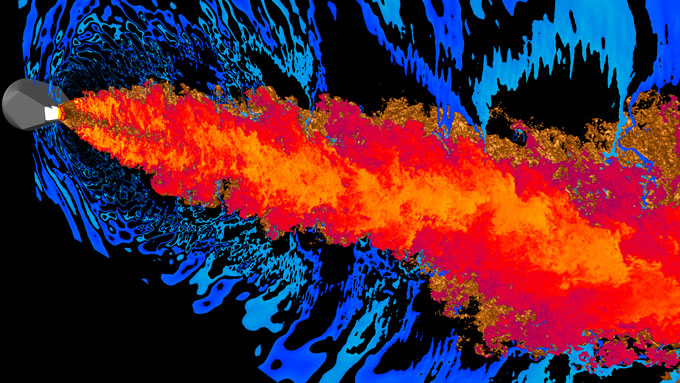Stanford Researchers Build Million-Core Supercomputer

As you're aware, most computers have four processor cores, some have eight; but a team at Stanford have built a supercomputer that contains over a million cores.
This behemoth of a machine is called 'Sequoia,' and can be found at Lawrence Livermore National Laboratory (LLNL), in California. It contains a whopping 1,572,864 cores, and 1.6 petabytes of memory - that's 1.6 million gigabytes, almost enough to store the data of every academic library in the US.
Instead of using this device to, say, actually play Crysis 3 on max graphics (a tempting proposition), researchers at Stanford Engineering's Center for Turbulence Research (CTR) are somewhat squandering their gift and instead using Sequoia to run fluid dynamics simulations - a feat that requires just over a million of the machine's 1.5m core count. Simulations like these can help researchers discover how to build quiter aircraft engines.

The data gathered by Sequoia is instrumental in helping scientists cut down on aircraft noise; given that close examination of a live jet engine in action would probably lead to a lot of bloody mess.
Parviz Moin, the Director of the CTR states that it is thanks to supercomputers like the Sequoia that "only recently... have engineers been able to model jet engines and the noise they produce with accuracy and speed."
As for how the computer works, it's the same as any humble quad-core device. Each bit of complex mathematics is broken down and sent to various cores, where it is computed. The more cores a computer has, the more it can do at once. However, when a computer reaches a certain number of cores - previously around one million - a processing bottleneck would occur. Too many cores working at once would create a blockage.
Fortunately a team at CTR lead by Joseph Nichols was able to refine the process with a code - called CharLES - to bypass the bottleneck allowing all 1,572,864 of the Sequioa's cores to do their stuff.
In addition to their noise simulations, the CharLES code is being used to explore other facets of aircrafts, such as the turbulent flow over a wing, and propulsion systems used in hypersonic flgiht. In time we may be seeing our skies home to sleeker, quieter, more efficient aircrafts.
But we still won't know if Crysis 3 played on max graphics is actually possible.
Source: Stanford
Jamie O'Flinn